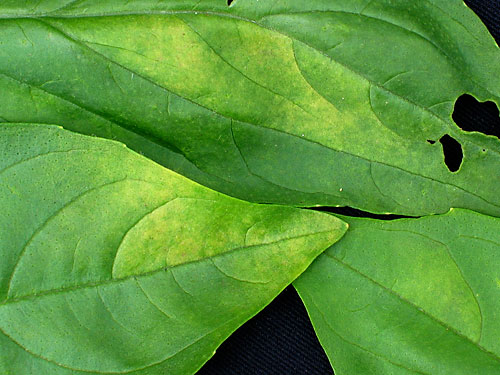From Meg McGrath, Long Island Horticulture Research and Extension Center.
Basil downy mildew, which was first reported in the U.S. in October 2007 in Florida and the Northeast in 2008, is unfortunately back again. And it’s being found several weeks earlier!
Like the late blight that has been killing tomatoes and potatoes in the region, the pathogen causing downy mildew in basil produces a spore that can be dispersed long distances by wind, and then deposited onto plants by rain.
There have been many perfect days for these pathogens to spread and cause more disease this summer. Cloudy days have provided protection from spore-killing UV rays. Wind currents have moved spores great distances. And late-day rains have deposited spores on plants and provided the high humidity and wet leaves that the pathogen spores need to germinate and infect.
Unfortunately there’s not much gardeners can do to prevent their basil plants from being exposed to the downy mildew fungus. And there are no fungicides labeled for basil downy mildew that gardeners can use. The only way to minimize losses is to harvest leaves before they become affected.
Routinely examine plants for symptoms. (See images at the Long Island Vegetable Disease photo gallery.) Downy mildew is difficult to detect by looking just at upper leaf surfaces because no distinct leaf spots form there. Instead, the affected tissue turns yellow.
Basil leaves often have a slight yellow mottling which further challenges detection of downy mildew. But if yellowing is due to downy mildew, when you turn affected leaves over and look opposite the mottling you will see fungal growth that is white when first produced and later turns a distinctive purplish gray. These symptoms are unique to this disease.
You can learn more about basil downy mildew, monitor its spread to predict risk for your plants, or report observations at Cornell’s Vegetable MD Online website.



